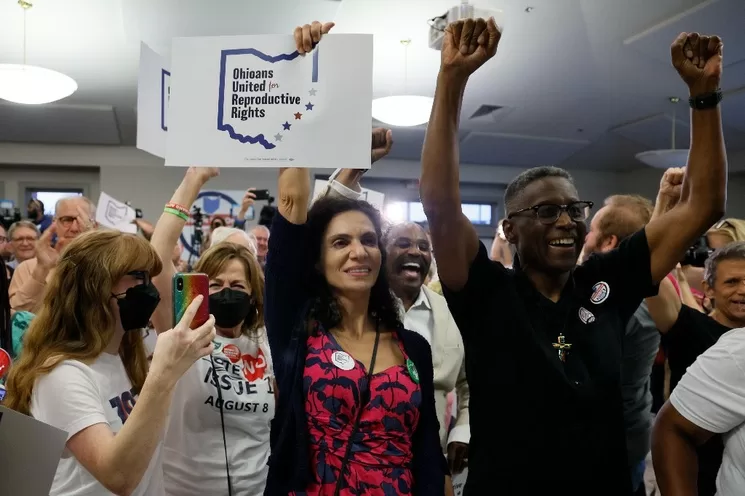Columbus. Ohio voters roundly rejected a Republican-backed measure Tuesday that would have made it harder to change the state constitution, gearing up for a fall campaign that will become the nation’s latest referendum on abortion rights since the Supreme Court US court The court struck down protections nationwide last year.
Defeat on Question 1 maintains a simple majority threshold for passing future constitutional amendments. It would have raised that to a supermajority of 60%, which supporters say would protect the state’s founding document from outside interest groups.
While abortion was not directly on the special election ballot, the result marks the latest setback for Republicans in a conservative-leaning state that favors strict restrictions on the procedure. Ohio Republicans placed the question on the summer ballot in hopes of undermining a citizens’ initiative to be decided by voters in November that seeks to enshrine abortion rights in the state.
Other states where voters have considered abortion rights since last year’s Supreme Court ruling have protected them, even in red states like Kansas and Kentucky.
Interest in the special election was intense, even after Republicans ignored their own law that went into effect earlier this year to put the question to voters in August. Voters cast nearly 700,000 early ballots in person and by mail before Tuesday’s final day of voting, more than double the number of early votes in a typical primary election. Early turnout was especially high in the Democratic-leaning counties surrounding Cleveland, Columbus and Cincinnati.
One Person, One Vote, the opposition campaign, represented a broad, bipartisan coalition of voting rights, labor, religious and community groups. The group was also allied with four living former state governors and five former state attorneys general from both parties, who called the proposed change bad public policy.
In place since 1912, the simple majority standard is a far more surmountable hurdle for Ohioans for Reproductive Rights, the group promoting November’s abortion rights amendment. It would establish “a fundamental right to reproductive freedom” with “reasonable limits”.
Voters in several states have approved ballot questions protecting abortion access since the Supreme Court struck down Roe v. Wade, but they have typically done so with less than 60% of the vote. Last year’s AP VoteCast poll found that 59% of Ohio voters say abortion should be generally legal.
Advocates on both sides of Issue 1 relied heavily on outside funding and national groups in their campaigns.
The result came in the same type of August special election that Republican Secretary of State Frank LaRose, a candidate for the US Senate, had previously testified against as undemocratic due to a historically low turnout. Republican lawmakers voted last year to mostly eliminate such elections, a law they ignored for this year’s election.
Voter rejection of the proposal marked a rare rebuke for Ohio Republicans, who have held power in all branches of state government for 12 years.
Ohio Right to Life, the oldest and largest anti-abortion group in the state and a key force behind the special ballot measure, vowed to continue fighting through the fall.




